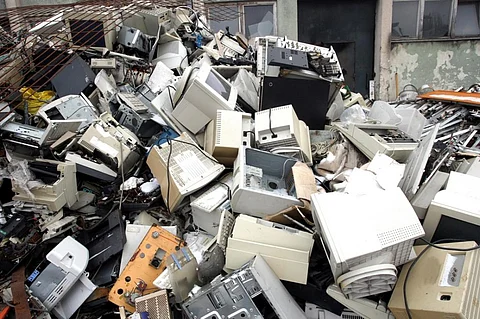

The world produced a whopping 62 billion kg of electronic waste (e-waste) in 2022. That number is projected to rise to 82 billion kg in 2030, according to a new report brought out by the United Nations (UN) on March 20, 2024.
“The easiest solution for all e-waste issues is still not to generate any e-waste in the first place,” the Global E-waste Monitor 2024, brought out by United Nations Institute for Training and Research (UNITAR), International Telecommunication Union (ITU), and Fondation Carmignac, a corporate foundation, stated.
The reported noted a worrying statistic. The rise in e-waste generation is outpacing the rise in formal recycling by a factor of almost 5.
This is driven by technological progress, higher consumption, limited repair options, short product lifecycles, growing electronification, and inadequate e-waste management infrastructure.
The rise in formal and environmentally sound collection and recycling has thus been outstripped, noted the document.
The 62 billion kg of e-waste generated globally in 2022 is a far cry from 2010, when the world generated 34 billion kg of e-waste.
Of this 62 billion, 13.8 billion kg is documented as ‘formally collected and recycled in an environmentally sound manner’, according to the UN report.
“This figure was 8 billion kg in 2010. The documented formal collection and recycling rate has increased at an average rate of 0.5 billion kg per year,” it observed.
Of the remaining 48.2 billion kg of e-waste, 16 billion kg is estimated to be collected and recycled outside of formal systems in high- and upper-middle-income countries with developed e-waste management infrastructure.
Another 18 billion kg is handled mostly by the informal sector in low- and lower-middle-income countries, with no developed e-waste management infrastructure.
The remainder 14 billion kg is likely disposed of as residual waste, the majority of which is put in landfills worldwide.
The report also highlighted the composition of the 62 billion kg of e-waste. It contained 31 billion kg of metals, 17 billion kg of plastics and 14 billion kg of other materials (minerals, glass, composite materials, etc.)
A whopping 58,000 kg of mercury and 45 million kg of plastics containing brominated flame retardants are released into the environment every year.
The reason: Most e-waste is managed outside formal collection and recycling schemes.
“This (release of mercury and plastics) has a direct and severe impact on the environment and people’s health,” the document stated.
Among regions, Europe has the highest rate of documented formal collection and recycling of e-waste at 42.8 per cent.
Meanwhile, Africa generates the lowest rates of e-waste but struggles to recycle it. The recycling rates of most African countries are below 1 per cent.
Asia, which consists of India, does not have much to write home about as well, according to the report:
Countries in Asia generate almost half of the world’s e-waste (30 billion kg) but have made limited advances in e-waste management; moreover, relatively few of them have enacted legislation or established clear e-waste collection targets.
Europe (17.6 kg), Oceania (16.1 kg) and the Americas (14.1 kg) generated the highest amount of e-waste per capita in 2022.
They also had the highest documented per capita collection and recycling rates (7.53 kg per capita in Europe, 6.66 kg per capita in Oceania and 4.2 kg per capita in the Americas). This was because their collection and recycling infrastructure was the most advanced.
Collection and recycling rates are highest for heavier and bulkier equipment like temperature exchange equipment and screens and monitors.
Thus, while toys, microwave ovens, vacuum cleaners and e-cigarettes comprise a third (20 billion kg) of the world’s e-waste, recycling rates for them are very low — 12 per cent globally.
Small IT and telecommunication equipment — laptops, mobile phones, GPS devices and routers — constitute five billion kg of e-waste. But just 22 per cent of this is documented as formally collected and recycled.
On the policy front, 81 countries have adopted e-waste policy, legislation or regulation. Sixty-seven countries have legal provisions on EPR for e-waste. Another 46 have provisions on e-waste collection rate targets. Finally, 36 countries have provisions on e-waste recycling rate targets.